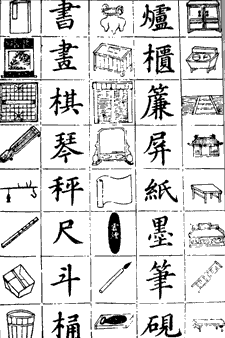|
Chinese Characters For Transcribing Slavonic
Chinese characters for transcribing Slavonic were Chinese characters created for the purpose of transcribing Slavonic sounds into Chinese. The Russian Orthodox Church's mission in China had an interest in translating liturgical texts into Chinese and Japanese, and sought to devise new characters for this purpose. Many of these new characters were proposed by Archimandrite Gurias, the 14th head of the Russian mission from 1858–1864. They would have transcribed certain syllables normally not valid in standard Chinese phonology, such as ''vin'', ''gi'', or ''reia''. These characters were later used for transcription into Japanese as well, with the character pronunciations changed to account for Japanese phonology. However, in both China and Japan, leaders of the Russian missions eventually decided to translate liturgical texts using standard vernacular Chinese and katakana, respectively. The majority of the new characters were composed through combining two existing characters ... [...More Info...] [...Related Items...] OR: [Wikipedia] [Google] [Baidu] |
Chinese Characters
Chinese characters () are logograms developed for the writing of Chinese. In addition, they have been adapted to write other East Asian languages, and remain a key component of the Japanese writing system where they are known as '' kanji''. Chinese characters in South Korea, which are known as '' hanja'', retain significant use in Korean academia to study its documents, history, literature and records. Vietnam once used the ''chữ Hán'' and developed chữ Nôm to write Vietnamese before turning to a romanized alphabet. Chinese characters are the oldest continuously used system of writing in the world. By virtue of their widespread current use throughout East Asia and Southeast Asia, as well as their profound historic use throughout the Sinosphere, Chinese characters are among the most widely adopted writing systems in the world by number of users. The total number of Chinese characters ever to appear in a dictionary is in the tens of thousands, though most are g ... [...More Info...] [...Related Items...] OR: [Wikipedia] [Google] [Baidu] |
